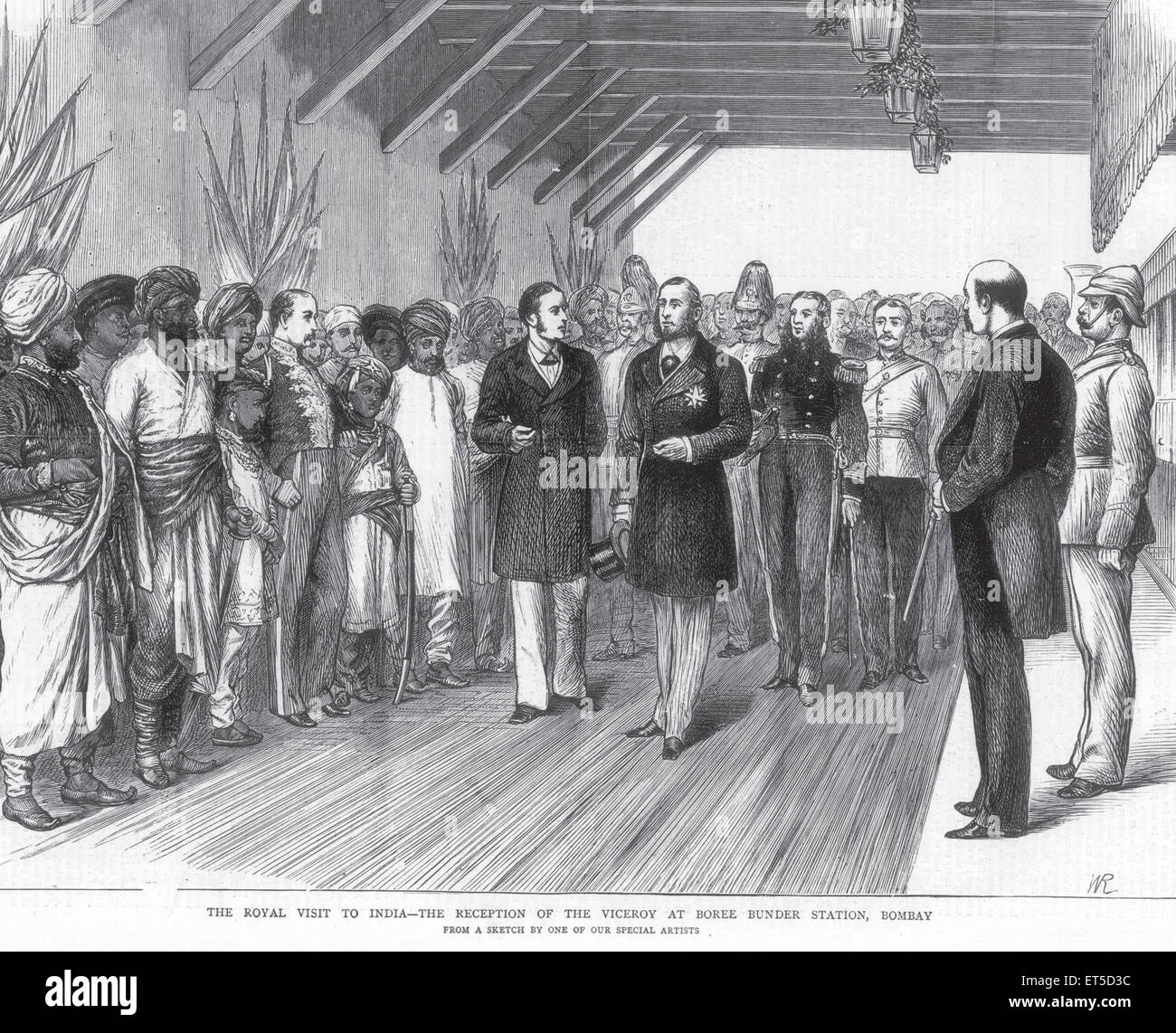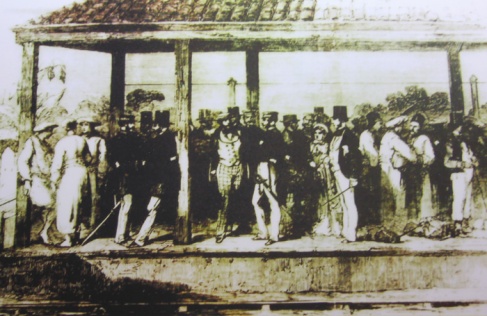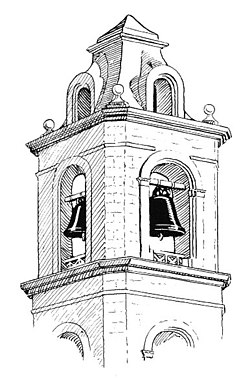A vintage 3 coach EMU rake in the early 1940's.
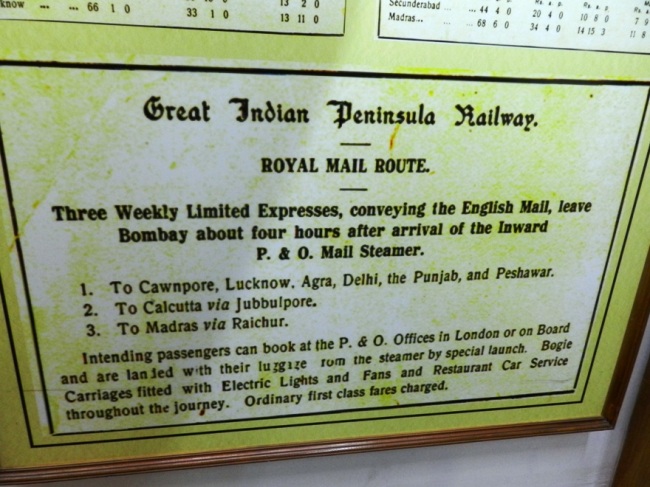

In its 150th year now, the Mumbai suburban railways of WR is already saturated, with even a 15-minute shutdown of services making it to the headlines the next day. A once-doubted railway line is now a key part of Mumbai’s lifeline.
When plans for expansion of railway network of Bombay, Baroda & Central India (BB & CI) were under way, a railway line from Surat to Bombay, now Mumbai, was thought to be costly as it was proposed to be built along a valley.
Records with the Western Railway show that some officials were even of the view that rail line from Surat should be connected to rail line of Great Indian Peninsula Railway,
which had already been established in 1853 between Bombay and Thane
1969-BOMBAY CENTRAL STATION
Ballard Pier Mole Station Bombay, 1925 Postcard
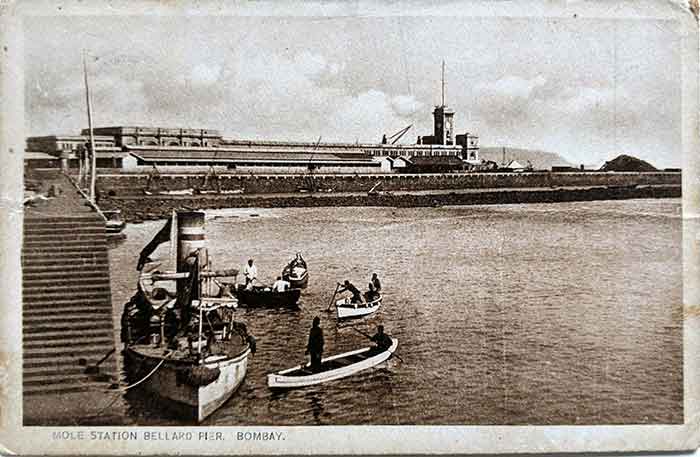
An old 1925 postcard of the Ballard Pier Mole Railway Station in Bombay or Mumbai. It is situated next to the Bombay Port. It operated from the 1900s up to 1944. Mainly to cater to the Britishers and Europeans who arrived from passenger steamers. They would board the Frontier Mail to take them to their various destinat
1930: Ballard Pier, Mumbai. A steamer is berthed and also seen is Ballard Pier Mole railway station.
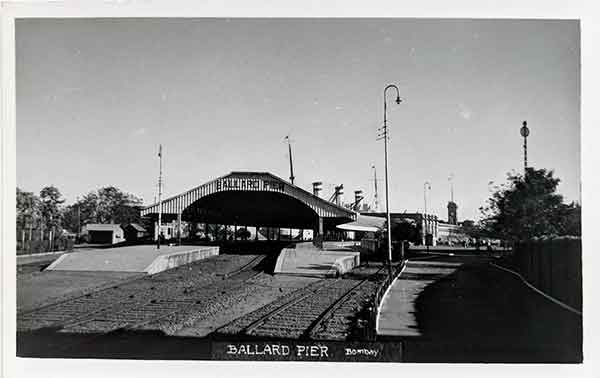
The Railway Station was once the starting point for the Punjab Mail and the Frontier Mail (Golden Temple Express). Located in the south of Bombay, now Mumbai next to the port.
By 1944 it closed down, this Postcard is in memory of this once great railway landmark. If looking closely at the picture, a ship lies in the harbor with its three smokestacks visible in the background. The harbor building and its central tower are also visible on the right.
It had the unusual name of Mole Railway Station, possibly because of its resemblance to a mole hole. Located just next to Bombay port, it operated from the 1900s until 1944. And it was mainly to cater to the British and European passengers who arrived in steamers from abroad.
They would board either the Frontier Mail or the Punjab Mail to take them to their various destinations in eastern India or northern India (up to Peshawar). It was the same the other way round too. Because of the coming of regular air travel, it saved travel time considerably compared to steamer ship travel.
Enabling passengers to arrive faster by flight rather than steamers. Because of this, the station’s importance diminished greatly which forced its closure.
the early 1920s, this photo shows Punjab Mail leaving Ballard Pier Mole Station in Bombay for Peshawar in present day Pakistan
An interesting photo of the coach for those travelling cattle class and for those born with a silver spoon in their mouth…..
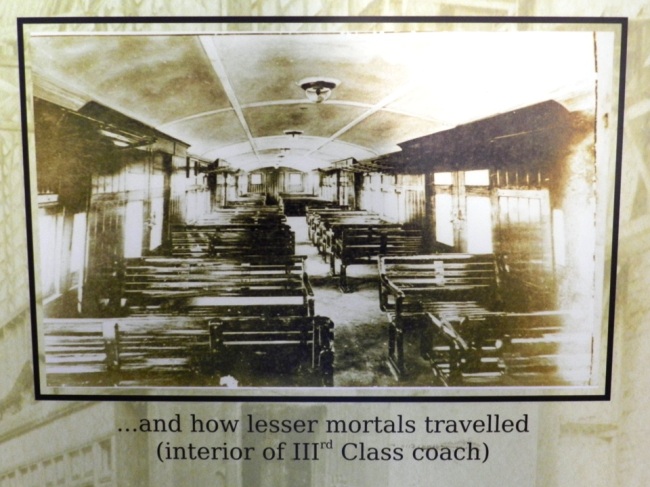
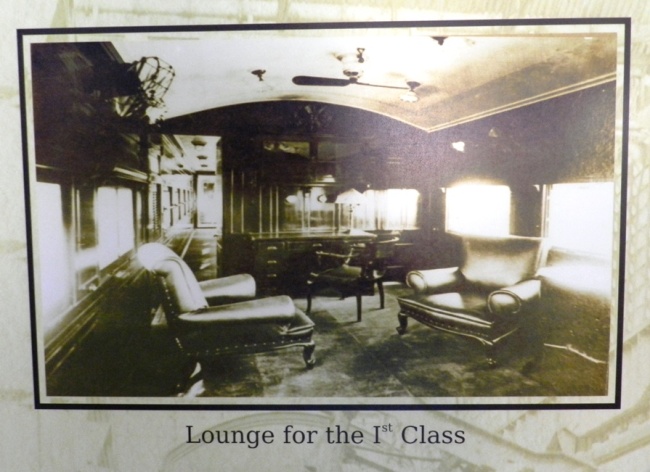
The Great Indian Peninsula Railway ((G.I.P) was the predecessor of the Central Railway and was incorporated in 1849 by an Act of the British Parliament. The first railway line in India from Bombay to Kalyan and then to Thana was constructed by the GIP. This was barely a few years after the opening of the first train route between Stockholm and Darlington (England) in 1825. GIP was advertised in London as the best way to travel through India.
(present day Central Railway) and had been extended along the ghat section up to Kalyan. Officials thought it would be relatively inexpensive to simply connect Surat and Kalyan.
After all, Mumbai was then not yet commercially successful. In fact, after initial surveys were conducted and Grant Road station identified as the Bombay end of the WR line, doubts were raised on whether the proposed line would attract enough passengers and business.
It was Mount Stuart Elphinstone, the Governor of Bombay,
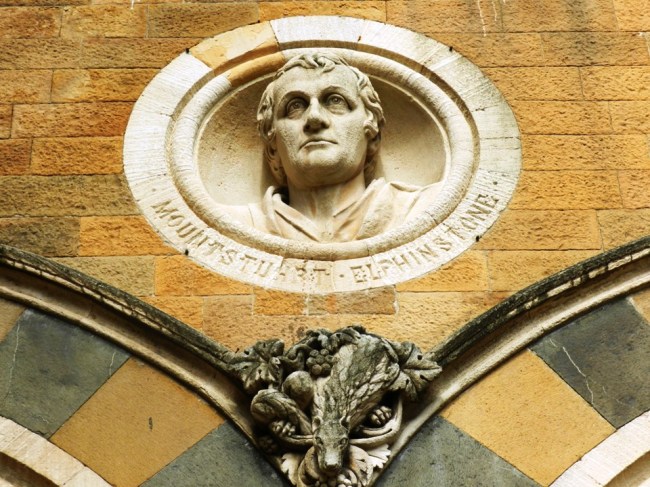
who put forward this case as beneficial to the British Empire. He pointed out that the new line would connect Bombay with the rich Gujarat province and it was found worthwhile to ship cotton from Bombay.

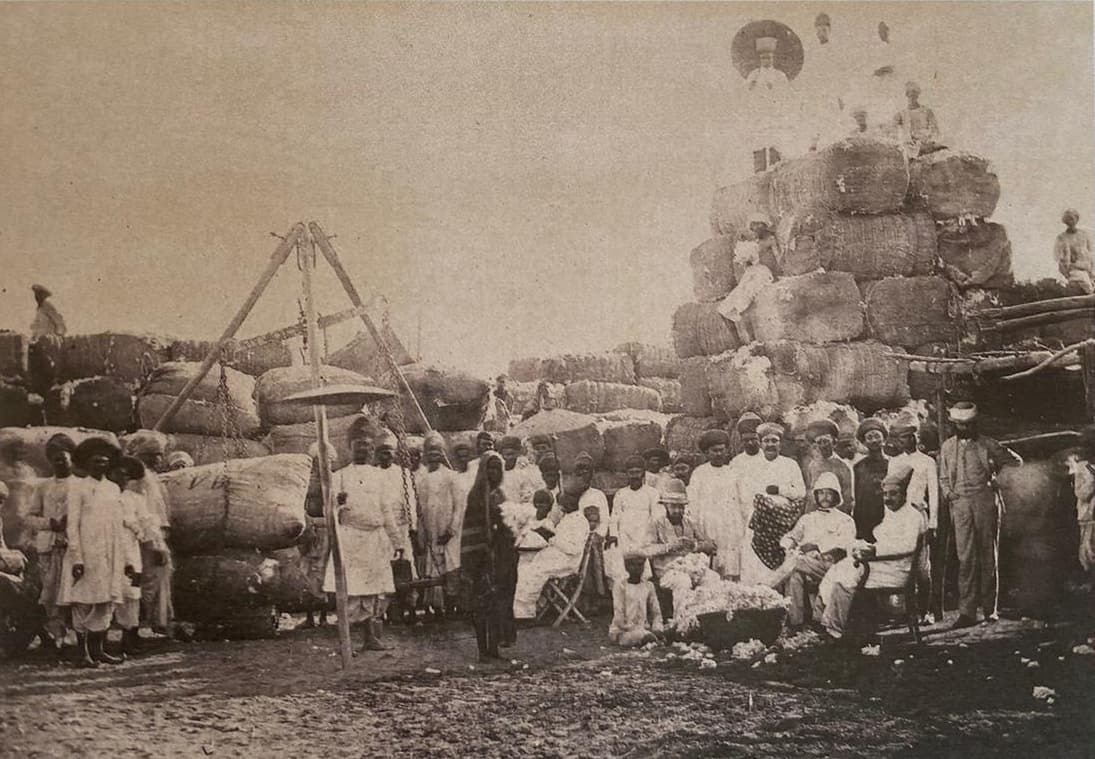
 Cotton bales lying at the
Cotton bales lying at the Bombay Terminus of the
Great Indian Peninsular Railway
ready for shipment to England
A BRITISH OWNED COMPANY FORMED IN 1999-SELLS OLD PHOTOS ILLEGALLY STAMPED AS alamy -same photos are sold by other photo companies including Getty for profit.
1865-BOMBAY SHARE MARKET AND NEW ORIENTAL BANK
colaba railway station on the left with steam engines


Boree Bunder station-formerly known as Victoria Terminus. The station was originally named after Queen Victoria, who completed 50 years as monarch in 1887. In 1996, the station was renamed to honor Emperor Chhatrapati Shivaji, the founder of the Maratha Empire. In 2017, the word "Maharaja" was added to the name, making it Chhatrapati Shivaji Maharaj Terminus (CSMT)
The station at Grant road is conveniently situated for the town of Bombay and has a short junction with the Great Indian Peninsula Railway Terminus, though it has not the advantage of direct communication with the Harbour and shipping.’’
With its close proximity to Boree Bunder station,
Boree Bunder station-formerly known as Victoria Terminus. The station was originally named after Queen Victoria,Now Chhatrapati Shivaji Maharaj Terminus (CSMT)
The story of wha
which was used for trading and shipping of cotton, Grant Road was selected as the Bombay terminus for the line.
It was not the usual sultry Bombay afternoon. The scorching summer seemed more intense with the crowds milling about. Or perhaps it was the heat emanating from three brand new steam engines. Sindh, Sultan and Sahib were belching smoke ready to tug 14 decorated coaches into history.
BOMBAY RAILWAY STATION -1870'SConstruction of the railway line started from Utran reached Grant Road in Bombay in 1864. On November 28, 1864, the first BB& CI train on what was initially referred to as the “western coastal lines” chugged from Grant Road station to Ahmedabad in Gujarat, heralding a new era of seamless and direct connectivity of Bombay with Gujarat and further northward. For the inaugural run, a bottle of wine was smashed on the engine by British officials.
The train left Grant Road station at 7 am and reached Ahmedabad at 5 pm the next day. In its return journey, the train left Ahmedabad at 7 am the following day and arrived at Grant Road station at 5.30 pm the next day.
The long journey time is attributed to the fact that the trains leaving Bombay and Ahmedabad ran on the first day only up to Surat. The train would reach Surat around 5 pm and depart for its onward journey at about 7 am the next day. There was a refreshment room and a traveller’s bungalow at Surat for passengers who wanted to travel beyond Surat.
Hemant Kumar, General Manager, Western Railway (WR), says, “These celebrations for 150 years of the Western Railway fetch us to glorious part of Railway. The Railways have made a valuable contribution in the socio-economic and overall development of Mumbai and Gujarat. To further improve the connectivity and to provide faster services to the passengers, the work on the projects of introducing semi-high speed and high-speed trains are in the pipeline. It is also planned to introduce bullet trains on this section, which will be the first in the country.’’
At present, Western Railway operates one of the largest suburban networks in the world, serving 35 stations carrying 3.5 million commuters (approx.) every day in 1305 train services in Mumbai. It is aptly called the lifeline of Mumbai Metropolis.
For the record
In times when the Narmada bridge at Surat was not yet built, a boat would ferry passengers across the river to go to destinations beyond Surat.
In April 1867, the first suburban service propelled by a steam engine ran in Mumbai. The network was extended till Churchgate by 1870. A senior railway officer says, “At that time, the number of commuters was less than 100 at Grant Road Terminus. Now WR runs 1,305 services daily.’’
Church Gate Street of bombay fort , --(and Times of India office).Photographer: Unknown Medium: Photographic print Date: 1860[AT THE END OF STREET CAN SEE THE INSIDE VIEW OF CHURCH GATE-from which church gate station got the name ]
church gate of Bombay fort before demolition

CHURCH GATE OF THE FORT WAS DEMOLISHED AND THE FLORA FOUNTAIN MADE ON THE SAME SPOT
VIEW OF CHURCH GATE-from which church gate station got the name

In 1870, Churchgate station was built
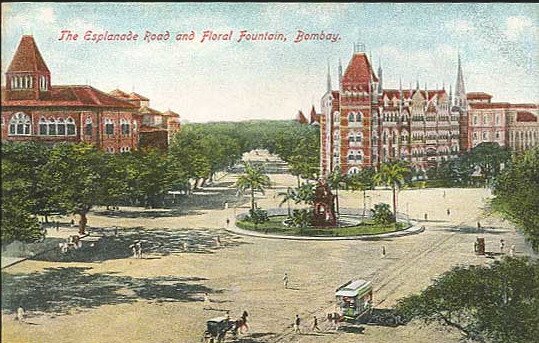
1878 - vehicles on Bombay street - Buggy; Reckla ;Shigram Horse


and the railway line was further extended towards Colaba by 1872. A goods shed was built at Colaba. By 1896, a new station was established at Colaba to serve as a Terminus for both long-distance passengers and suburban commuters.
By 1900, 45 trains were employed in both directions to carry more than 1 million passengers every year.

However, by the 1920s, the government’s plan to reclaim land for what would be later known as Backbay Reclamation
meant that the railway line between Churchgate and Colaba would be an obstruction and so the Government of Bombay ordered the Railways to hand over the section between Churchgate and Colaba.
It took the BB&CI company 10 years to create a new terminus at Belassis Road, which is known as Bombay Central now.
Before the curtains drew at Colaba Terminus, the BB&CI ran its last service on the night of December 31, 1930. After the last train left for the northern end of the city, the line between Colaba and Churchgate was sealed and handed back to the Secretary of India.
With Metro planned from Colaba now, many in the railways still wonder whether the administrators then were short-sighted about the way the city would develop in the years to come.
As the BB& CI made progress, the first electric train between Churchgate and Borivali was launched in 1928.
November 5, 1951, was a golden day in the history of Western Railway. It was formed by merging numerous state-owned railways together with the BB&CI and the Saurashtra, Rajputana & Jaipur Railways.
There still are several things of the British era that continue to be a part of the railway system in Mumbai. One of them is the bell tower on top of Bandra station.

Before the Railways came into existence, all vehicles were driven by animal
s.
The Mumbles railway
The first fare-paying, passenger steam railway was probably the Canterbury & Whitstable Railway built in 1830 a few months before the Liverpool & Manchester Railway. The stations were Canterbury North lane and Whitstable. However, the C&W used stationary engines for much of its length, and so the first entirely locomotive hauled railway was the Liverpool & Manchester Railway, also opened in 1830 (as was the first section of the Baltimore and Ohio Railroad in the United States). The stations for the L&M were at Crown Street in Liverpool and Liverpool Road in Manchester.
The first railway outside Great Britain was the Dublin and Kingstown Railway, opened in 1834 with stations at Westland Row and Kingstown Harbour.
The first railway built in the British Empire, outside the United Kingdom, was, rather surprisingly, built in Jamaica and opened in 1845. The stations were at Kingston and Spanish Town.
A bell tower was set up at the railway station which was used to signal horse-drawn Victorias or tongas to come and pick up the British officers who arrived at the station.Mumbaikars may also not remember why Dadar railway station is referred to as Dadar BB or Dadar TT among railway authorities. The Western Railway side of Dadar station is referred to as Dadar BB (Bombay, Baroda) while the Central Railway side is referred to as Dadar TT (Tram Terminus).
Map of Western Railway
Ratlam-Mumbai Central, Ahmedabad-Vadodara and Palanpur-Ahmedabad are some of the main railway lines that come under the jurisdiction of Western Railway. WR covers the state of Gujarat, the eastern segment of Rajasthan, a fraction of Western Madhya Pradesh and coast of Maharashtra. It also serves a number of ports on the west coast of India.
kalpana.verma@expressindia.com

Vintage images: 160 years of India's first passenger train journey
Since that first journey in 1853, railways have have become one of the most important modes of transportation in the country. Here's a look back at the early days of Indian railways in a series of photographs from the 19th century.
ALSO SEE Google doodles 160 years of India's first passenger train journey
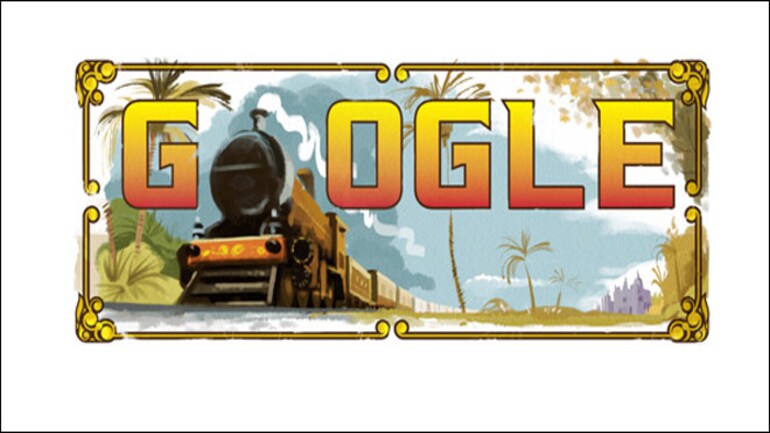
Google
celebrated 160 years of India's first train journey. on April 16, 1853,
the first train in India was rolled out between Bori Bunder and Thane
near Mumbai.
On its maiden run, the train between Bori Bunder and Thane covered a distance of 21 miles (33.6 Km).
With
the creation of two major companies -- the Great Indian Peninsular
Railway and the East Indian Railway-- the work to expand the railway
tracks in India started.
The trains were powered by steam
engines. Google's celebrating the 160th anniversary today may take some
by surprise as historians have conflicting views on the start of the
first Indian train.
When trains were first introduced in India,
there was some resistance by the leaders as they viewed it as a move by
the East India Company to exploit Indian resources.
Introduction
of railways at early stage in India has always been a matter of intense
debate and scrutiny among Indian historians.
Bal Gangadhar Tilak
was one of the first nationalist leaders who opposed the railways by
saying, "It looks like decorating another's wife." One prominent
newspaper Sahachar on April 30, 1884, had contended that "extension of iron rods means extension of iron chains."
With over 1.4 million employees, Indian
Railways is the world's forth largest rail network and the world's ninth
largest commercial or utility employer. It is operated by Government of India through
Ministry of Railways.
A train carying livestock passes Rohtas Fort, India, circa 1851. The area is now part of Pakistan. Original Publication: Illustrated London News, pub. 7th June 1851 (Photo by Illustrated London News/Hulton Archive/Getty Images)

Third Class
Third Class 12th March 1864: Two storied, third class carriage on the Bombay, Baroda and Central India railway. Original Publication: Illustrated London News - pub. 1864 (Photo by HultonArchive/Illustrated London News/Getty Images)

FOX HUNT AT ANDHERI RAILWAY STATION 1885
FOX HUNT AT ANDHERI RAILWAY STATION [Print 1885 Hunting Jackal Bombay Foxhounds Andheri Railway Old Original]

















